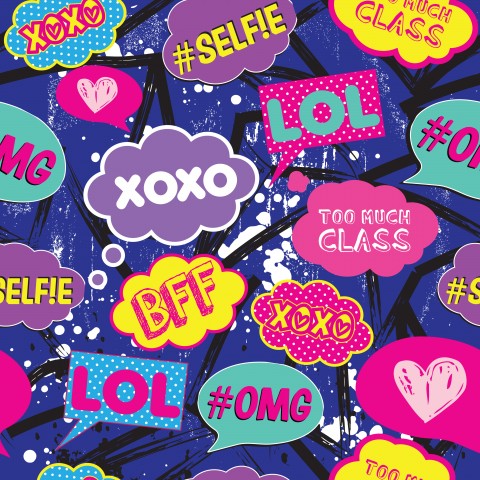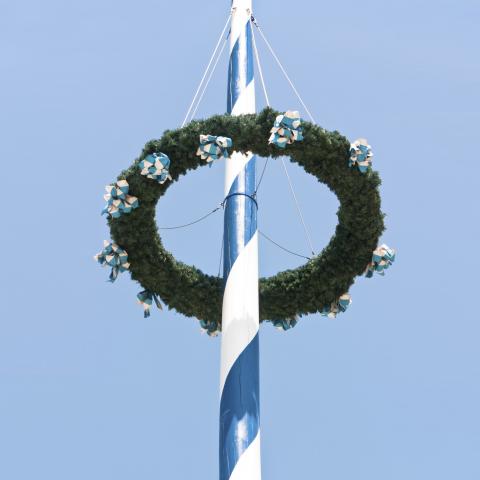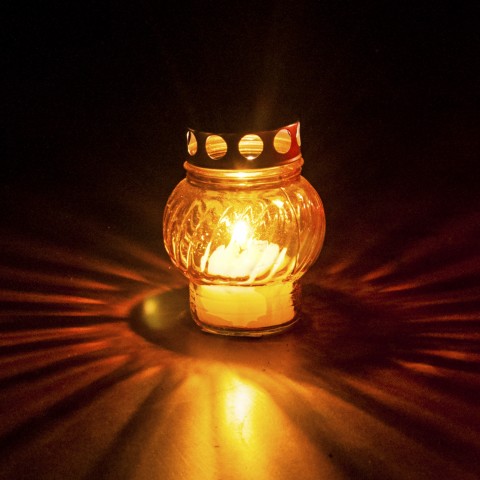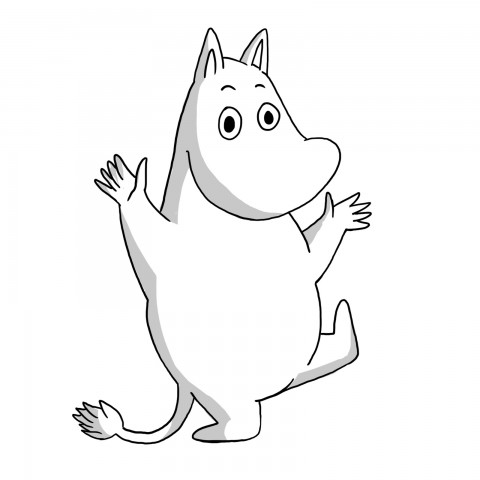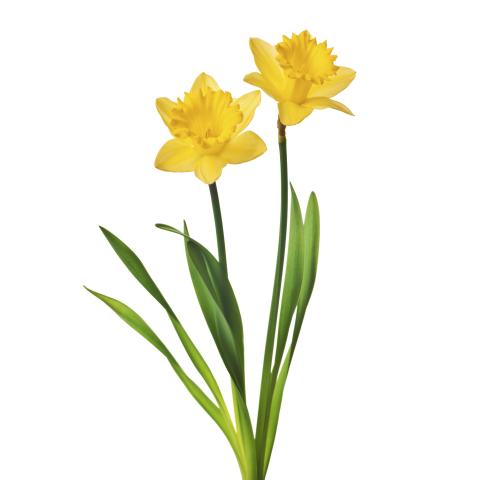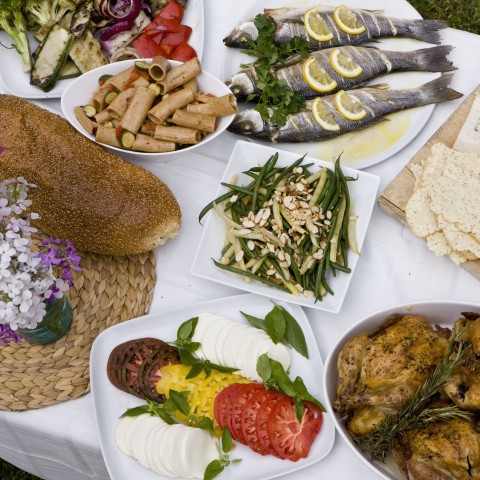
You’re learning to speak Finnish, and it’s going well. Your confidence is growing! So much so that you feel ready to share your experiences on social media—in Finnish.
At Learn Finnish, we make this easy for you to get it right the first time. Post like a boss with these phrases and guidelines, and get to practice your Finnish in the process.

1. Talking about Your Restaurant Visit in Finnish
Eating out is fun, and often an experience you’d like to share. Take a pic, and start a conversation on social media in Finnish. Your friend will be amazed by your language skills…and perhaps your taste in restaurants!
Juha eats at a restaurant with his friends, posts an image of the group, and leaves this comment:

POST
Let’s break down Juha’s post.
Lämmin suositus! Tästä ravintolasta saa mahtavaa sushia.
“A warm recommendation! You can get awesome sushi from this restaurant.”
1- Lämmin suositus!
First is an expression meaning “A warm recommendation!”
The first word means “warm,” and the second word means “recommendation.” You can use this expression whenever you want to recommend something or someone in a warm-hearted, empathetic way.
2- Tästä ravintolasta saa mahtavaa sushia.
Then comes the phrase – “You can get awesome sushi from this restaurant..”
You can use the expression, which means “You can get awesome…from this…”, to say you can find or buy something great from a shop or a restaurant. Sushi is quite trendy and popular in Finland, but as it isn’t a Finnish dish, not everyone has tried it. Also, usually only the bigger cities in Finland have sushi restaurants.
COMMENTS
In response, Juha’s friends leave some comments.
1- Nam! Näyttää herkulliselta.
His friend, Virpi, uses an expression meaning – “Yum! Looks delicious.”
Use this expression to show you are appreciative of the food depicted in the photo.
2- En ole koskaan maistanut, mutta näyttää mielenkiintoiselta. Mukavaa iltaa!
His neighbor, Ellen, uses an expression meaning – “I have never tasted it, but it looks interesting. Have a nice evening!”
Use this expression to share personal information about the food, and wish the poster a pleasant experience.
3- Ehkä Juha viet tytöt joskus tuonne syömään?
His college friend, Leo, uses an expression meaning – “Perhaps, Juha, you will take the girls to eat there sometime?”
Use this question only if you know the poster well – in context, you want the poster to take someone to the same restaurant.
4- Mennään kaikki yhdessä joku ilta!
His girlfriend, Anne, uses an expression meaning – “Let’s all go together some evening!”
Use this expression to show you are feeling sociable and would like to get together with the poster.
VOCABULARY
Find below the key vocabulary for this lesson:
suositus: “recommendation”
mahtava: “awesome”
näyttää joltakin: “to look like something”
maistaa (taste): “to taste”
mielenkiintoinen (interesting): “interesting”
mukava (nice): “nice”
yhdessä: “absolutely”
So, let’s practice a bit. If a friend posted something about having dinner with friends, which phrase would you use?
Now go visit a Finnish restaurant, and wow the staff with your language skills!
2. Post about Your Mall Visit in Finnish
Another super topic for social media is shopping—everybody does it, most everyone loves it, and your friends on social media are probably curious about your shopping sprees! Share these Finnish phrases in posts when you visit a mall.
Anne goes shopping with her sister at the mall, posts an image of the two of them together, and leaves this comment:

POST
Let’s break down Anne’s post.
Shoppailuterapiaa siskon kanssa! Upeita löytöjä.
“Shopping therapy with my sister! Great findings.”
1- Shoppailuterapiaa siskon kanssa!
First is an expression meaning “Shopping therapy with sister!”
The first word comes directly from the English phrase “shopping therapy.” You can use it in a playful way to describe time spent shopping as therapeutic.
2- Upeita löytöjä.
Then comes the phrase – “Great findings..”
This expression is in the plural form. The first word means “great” or “fantastic.” The second word means “findings,” but when talking about shopping, it can also refer to “bargains.”
COMMENTS
In response, Anne’s friends leave some comments.
1- Säästäkää jotakin mullekin!
Her high school friend, Venla, uses an expression meaning – “Please, spare something for me too!”
Use this expression to be funny and tease the poster a bit.
2- Älä tuhlaa liikaa…
Her boyfriend, Juha, uses an expression meaning – “Don’t spend too much…”
Use this expression to show you are feeling concerned about the poster’s spending habits. But usually, this is not a topic you would discuss seriously on social media, so it serves more as a comment just to make conversation.
3- Muista ostaa Juhalle tuliaisia!
Her college friend, Leo, uses an expression meaning – “Remember to buy some souvenirs for Juha!”
Use this expression when you want to contribute to the conversation with a suggestion.
4- Olette varmasti löytäneet kauniita vaatteita. Pitäkää hauskaa!
Her neighbor, Ellen, uses an expression meaning – “I’m sure you found some beautiful clothes. Have fun!”
Use this expression to show you are feeling warmhearted and wish the shoppers well.
VOCABULARY
Find below the key vocabulary for this lesson:
shoppailuterapia: “shopping therapy”
löytö: “finding”
säästää: “to spare”
mullekin: “for me too (spoken language)”
tuliainen: “souvenir”
kommentti: “comment”
löytää: “to find”
vaate: “a piece of clothing”
So, if a friend posted something about going shopping, which phrase would you use?
3. Talking about a Sport Day in Finnish
Sport events, whether you’re the spectator or the sports person, offer fantastic opportunities for great social media posts. Learn some handy phrases and vocabulary to start a sport-on-the-beach conversation in Finnish.
Juha plays with his friends at the beach, posts an image of the team, and leaves this comment:

POST
Let’s break down Juha’s post.
Tänään rantalentistä poikien kanssa. Vierivä kivi ei sammaloidu!
“Today, beach volley with the boys. The rolling stone gathers no moss!”
1- Tänään rantalentistä poikien kanssa.
First is an expression meaning “Today beach volley with the boys. .”
Finns often refer to their male friends as “boys,” even when they’re already adults. The word for “volleyball” used here is actually a shortened version and a common nickname for the sport.
2- Vierivä kivi ei sammaloidu!
Then comes the phrase – “The rolling stone gathers no moss!”
Unlike in English, in Finnish this common phrase is an appreciation of an active and energetic lifestyle. The first word means “rolling,” the second “stone”, and the third and fourth words together mean “does not gather moss.”
COMMENTS
In response, Juha’s friends leave some comments.
1- Koita osua palloon!
His college friend, Leo, uses an expression meaning – “Try to hit the ball!”
Use this expression when you’re joking with the poster’s sport abilities.
2- Taitaa olla myöhäistä…
His girlfriend’s nephew, Elias, uses an expression meaning – “I think it’s too late…”
Use this expression if you are feeling concern over the time of the day.
3- Upeaa! Kiva että viihdytte ulkona.
His friend, Virpi, uses an expression meaning – “Fantastic! It’s nice that you’re enjoying the outdoors.”
Use this expression to partake in the conversation with general, pleasant comments.
4- Haluatteko poikien kanssa saunaan pelin jälkeen? Voin laittaa sen päälle.
His girlfriend, Anne, uses an expression meaning – “Do you want to go to the sauna with the boys after the game? I can switch it on.”
This is a sentence that’s dependent on context and your relationship with the poster. The action, however, shows care and concern.
VOCABULARY
Find below the key vocabulary for this lesson:
rantalentis: “beach volley”
vieriä: “to roll”
sammaloitua: “to become mossy”
osua: “to hit”
myöhäinen: “late”
viihtyä: “to enjoy”
kanssa: “with”
laittaa päälle: “to switch on “
Which phrase would you use if a friend posted something about sports?
But sport is not the only thing you can play! Play some music, and share it on social media.
4. Share a Song on Social Media in Finnish
Music is the language of the soul, they say. So, don’t hold back—share what touches your soul with your friends!
Anne shares a song she just heard at a party, posts an image of the artist, and leaves this comment:

POST
Let’s break down Anne’s post.
Ihana biisi, mitä kuuntelin eilen koko illan.
“A wonderful tune that I listened to the whole evening yesterday.”
1- Ihana biisi
First is an expression meaning “A wonderful tune.”
The first word means “wonderful” or “lovely.” The second is a colloquial word for “song.” This is used most often by young people or people in the music industry.
2- mitä kuuntelin eilen koko illan.
Then comes the phrase – “which I listened to the whole evening yesterday..”
This sentence is in the past tense. After the relative pronoun, the first word is “I listened to”. The second word is “yesterday.” The third word is “whole,” and the last word means “evening.” The last word is in the genitive case. You can change the sentence by using another indication of time.
COMMENTS
In response, Anne’s friends leave some comments.
1- Söpö laulaja!
Her high school friend, Venla, uses an expression meaning – “Cute singer!”
Use this expression to share an opinion that agrees with the poster’s.
2- Hänen keikalle olisi kiva mennä.
Her high school friend, Virpi, uses an expression meaning – “It would be nice to go to his gig.”
Use this expression when you also like the music and express a wish to experience the artist live.
3- Minä en ymmärrä nykymusiikkia enää ollenkaan..
Her supervisor, Hannu, uses an expression meaning – “I don’t understand contemporary music at all anymore…”
Use this expression to share an opinion that doesn’t agree with the poster’s. This is probably what an older person would comment about the music.
4- Tämä biisi on jo tosi vanha!
Her nephew, Elias, uses an expression meaning – “This song is already really old!”
This is another personal opinion, which is also different from the poster’s. It’s more likely the thing a younger, trendy person would say about the music.
VOCABULARY
Find below the key vocabulary for this lesson:
ihana: “lovely, wonderful”
biisi: “song”
kuunnella: “to listen”
söpö: “cute”
keikka: “gig”
nykymusiikki: “contemporary music”
ollenkaan: “at all”
tosi: “really”
Which song would you share? And what would you say to a friend who posted something about sharing music or videos?
Now you know how to start a conversation about a song or a video on social media!
5. Finnish Social Media Comments about a Concert
Still on the theme of music—visiting live concerts and shows just have to be shared with your friends. Here are some handy phrases and vocab to wow your followers in Finnish!
Juha goes to a concert, posts an image of the band, and leaves this comment:

POST
Let’s break down Juha’s post.
Basso raikaa, nyt rokataan!
“The bass is blaring. Let’s rock!”
1- Basso raikaa
First is an expression meaning “The bass is blaring.”
The first word is direct from English and, naturally, means “bass.” The second word is an old verb, which means “to blare.” This refers to hearing loud music or other sounds. It’s also used almost only in the third person singular.
2- nyt rokataan!
Then comes the phrase – “let’s rock!.”
The first word means “now,” and the second is the passive tense of the verb “to rock.” You can use this expression, for example, when you’re in a fun, laidback situation with friends and are about to start an energetic activity.
COMMENTS
In response, Juha’s friends leave some comments.
1- Eikä! Mahtavaa!
His friend, Virpi, uses an expression meaning – “No way! That’s great!”
Use this expression to show you are feeling optimistic.
2- Ostit kuitenkin varmasti korvatulpat.
His girlfriend’s nephew, Elias, uses an expression meaning – “Nonetheless, you surely bought earplugs.”
Use this expression if you think the music is too loud and not good for a person’s hearing. It’s a suggestion to the poster.
3- Tuun ensi kerralla mukaan!
His college friend, Leo, uses an expression meaning – “I’m coming along next time!”
Use this expression to show you are feeling eager to join the poster next time.
4- Älä riehu liikaa…
His girlfriend, Anne, uses an expression meaning – “Don’t rave too much…”
This comment is expressing a concern for the poster’s wellbeing.
VOCABULARY
Find below the key vocabulary for this lesson:
raikua: “to blare”
rokata: “to rock”
eikä: “no way”
kuitenkin: “nonetheless”
varmasti: “surely”
korvatulpat: “ear plugs”
ensi kerralla: “next time”
riehua: “to rave”
If a friend posted something about a concert , which phrase would you use?
6. Talking about an Unfortunate Accident in Finnish
Oh dear. You broke something by accident. Use these Finnish phrases to start a thread on social media. Or maybe just to let your friends know why you are not contacting them!
Anne accidentally breaks her mobile phone, and leaves this comment:

POST
Let’s break down Anne’s post.
Voi itku, kännykkä on mäsänä! Minut tavoittaa toistaiseksi siis vain somen ja sähköpostin kautta.
“Oh no, my phone is smashed! For now, you can only reach me through social media and e-mail.”
1- Voi itku, kännykkä on mäsänä!
First is an expression meaning “Oh no, my mobile phone is smashed! .”
The first two words of the sentence are a phrase expressing frustration and vexation when encountering a surprising, negative incident. The first word means “oh,” and the second word means “cry.” The third word is a kind of a nickname, a common colloquial name for a mobile phone. The last word of the sentence is a spoken language word for something that is broken or shattered.
2- Minut tavoittaa toistaiseksi siis vain somen ja sähköpostin kautta.
Then comes the phrase – “So for now, you can reach me only through social media and e-mail..”
Social media is commonly referred to in Finland using the first two initials of each word: S-O and M-E.
COMMENTS
In response, Anne’s friends leave some comments.
1- Mitä tapahtui?
Her boyfriend, Juha, uses an expression meaning – “What happened?”
Use this expression if you would like more information about the incident the poster describes.
2- Voi ei! Korvaako vakuutus?
Her friend, Virpi, uses an expression meaning – “Oh no! Does the insurance cover it?”
Use this expression to show you are feeling sorry for the poster about the incident, and want to know more details.
3- Voi miten kurjaa!
Her neighbor, Ellen, uses an expression meaning – “Oh, how miserable!”
Use this expression to show you are feeling sympathy for the poster’s plight.
4- Siis tuhosit taas yhden puhelimen. Aikamoinen terminaattori.
Her nephew, Elias, uses an expression meaning – “So you destroyed another phone yet again. Quite the terminator.”
Use this expression to employ a bit of sarcasm in a humorous way.
VOCABULARY
Find below the key vocabulary for this lesson:
itku: “cry”
kännykkä: “mobile phone”
mäsä: “broken”
some: “social media”
sähköposti: “e-mail”
korvata: “to compensate”
vakuutus: “insurance”
aikamoinen: “quite the”
If a friend posted something about having broken something by accident, which phrase would you use?
So, now you know how to describe an accident in Finnish. Well done!
7. Chat about Your Boredom on Social Media in Finnish
Sometimes, we’re just bored with how life goes. And to alleviate the boredom, we write about it on social media. Add some excitement to your posts by addressing your friends and followers in Finnish!
Juha gets bored at home, and leaves this comment:

POST
Let’s break down Juha’s post.
Kuolen tylsyyteen… pakko keksiä jotakin tekemistä!
“I’m dying of boredom… I must come up with something to do!”
1- Kuolen tylsyyteen…
First is an expression meaning “I’m dying of boredom….”
The first word simply means “I am dying.” The second one means “of boredom.” This phrase isn’t meant seriously, of course; it’s just a playful exaggeration to say an experience is unbearable.
2- pakko keksiä jotakin tekemistä!
Then comes the phrase – “I must come up with something to do!”
The first word is a noun for “compulsion.” Together with a verb, it can be used to express that you must do something. This expression is used relatively often in Finnish conversations.
COMMENTS
In response, Juha’s friends leave some comments.
1- Tuu korjaamaan mun pyörä!
His college friend, Leo, uses an expression meaning – “Come and fix my bike!”
Use this expression to joke with the poster and their situation.
2- Olisiko tänään hyvä päivä pihatöille?
His girlfriend, Anne, uses an expression meaning – “Would today be a good day for yardwork?”
This is another expression that could be meant as a joke, or, in this context, perhaps the girlfriend is a bit serious about the suggestion?!
3- Aina voi opiskella!
His supervisor, Hannu, uses an expression meaning – “You can always study!”
Use this expression to suggest another activity for the poster.
4- Ota kerrankin vain rennosti! Katso joku hyvä elokuva?
His friend, Virpi, uses an expression meaning – “For once, just take it easy! Maybe watch a good movie?”
Use this expression to suggest a leisurely activity to alleviate the poster’s boredom.
VOCABULARY
Find below the key vocabulary for this lesson:
kuolla: “to die”
tylsyys: “boredom”
pakko: “must”
tekeminen: “doing”
korjata: “to fix”
pihatyöt: “yardwork”
ottaa rennosti: “to take easy”
elokuva: “movie”
If a friend posted something about being bored, which phrase would you use?
Still bored? Share another feeling and see if you can start a conversation!
8. Exhausted? Share It on Social Media in Finnish
Sitting in public transport after work, feeling like chatting online? Well, converse in Finnish about how you feel, and let your friends join in!
Anne feels exhausted after a long day at work, posts an image of herself looking tired, and leaves this comment:

POST
Let’s break down Anne’s post.
Vitsi mikä päivä! Aivot ei toimi enää ollenkaan. Kauhea nälkä.
“Oh man, what a day! My brain doesn’t function at all anymore. So hungry.”
1- Vitsi mikä päivä! Aivot ei toimi enää ollenkaan.
First is an expression meaning “Oh man what a day! My brain doesn’t function at all anymore.”
The first two words of the first sentence, together with a noun, are a common way to sigh and exclaim something. Literally, the first word means “joke,” but in this context it’s emphasizing how awful or good something has been. Also, it’s relatively common in Finland to say one’s brain is not working anymore when one is very tired.
2- Kauhea nälkä.
Then comes the phrase – “So hungry…”
The first word means “terrible,” and the second word means “hunger” or “famine.” This is an often heard phrase from someone who is very hungry. You can also replace the second word with another noun, for example “fatigue”, “väsymys”, to express how terribly tired you are.
COMMENTS
In response, Anne’s friends leave some comments.
1- Pistä Juha kokkaamaan ja antamaan sinulle niska-hartiahieronta!
Her high school friend, Venla, uses an expression meaning – “Make Juha cook and give you a neck and shoulder massage!”
Use this suggestion to show you’re caring about the poster’s predicament.
2- Palautumisia! Yritä ottaa rauhallisemmin.
Her neighbor, Ellen, uses an expression meaning – “Try to recover! Try to take it easy.”
These are also warmhearted, well-intended advice to the poster.
3- Älä valita vaan tee ruokaa.
Her nephew, Elias, uses an expression meaning – “Don’t complain, just make some food.”
Use this expression to joke with the poster in a somewhat bossy, insulting way. Probably best reserved only for people who knows you well enough to understand you’re joking.
4- Huomenna otat kevyemmin.
Her boyfriend, Juha, uses an expression meaning – “Tomorrow you’re going to take it (more) lightly.”
Use this expression to show you care about the poster’s situation, and to make a positive, supportive suggestion.
VOCABULARY
Find below the key vocabulary for this lesson:
aivot: “brains”
toimia: “to function”
ollenkaan: “at all”
kauhea: “terrible”
nälkä: “hunger”
Palautumisia!: “Try to recover!”
ottaa rauhallisesti: “to take it easy”
ottaa kevyesti: “to take it lightly”
If a friend posted something about being exhausted, which phrase would you use?
Now you know how to say you’re exhausted in Finnish! Well done.
9. Talking about an Injury in Finnish
So life happens, and you manage to hurt yourself during a soccer game. Very Tweet-worthy! Here’s how to do it in Finnish.
Juha suffers a serious injury, posts an image of himself in a cast, and leaves this comment:

POST
Let’s break down Juha’s post.
Nyt kävi näin. Ainakin neljä viikkoa kipsissä. Aika parantaa haavat, eikö niin?
“So, this happened. At least four weeks in a cast. Time heals wounds, doesn’t it?”
1- Nyt kävi näin. Ainakin neljä viikkoa kipsissä.
First is an expression meaning – “So this happened. At least four weeks in a cast.”
The first sentence says something significant has happened, in a relatively ironic, dryly humorous way. Literally, it means “now this happened”.
2- Aika parantaa haavat, eikö niin?
Then comes the phrase – “Time heals wounds, doesn’t it?.”
The first part is a common and traditional proverb, literally meaning that all healing takes time. It can be used when something bad has happened to someone, to comfort them and to remind that things will get better gradually.
COMMENTS
In response, Juha’s friends leave some comments.
1- Hurjannäköistä!
His college friend, Leo, uses an expression meaning – “Looks fierce!”
Use this expression to show your sympathy with modern slang. It means that the injury looks serious.
2- Voi itku! Sattuuko paljon?
His girlfriend, Anne, uses an expression meaning – “Oh no! Does it hurt much?”
Use this expression to show you are feeling sorry for the poster, and want to know more details.
3- Mitä möhlit tällä kertaa?
His girlfriend’s nephew, Elias, uses an expression meaning – “So what did you blunder this time?”
Use this expression to be sympathetic in a slightly sarcastic, humorous way. Again, probably best not to use this with someone who doesn’t know your style well.
4- Harmin paikka. Nyt vain paljon lepoa!
His neighbor, Ellen, uses an expression meaning – “Such a pity. Now just rest a lot!”
Use this expression to show sympathy and to make a supportive suggestion.
VOCABULARY
Find below the key vocabulary for this lesson:
nyt: “now”
aika: “hour, time”
parantaa: “to heal”
haava: “wound”
sattua: “to hurt”
möhliä: “to blunder”
tällä kertaa: “this time”
lepo: “rest”
If a friend posted something about being injured, which phrase would you use?
We love to share our fortunes and misfortunes; somehow that makes us feel connected to others.
10. Starting a Conversation Feeling Disappointed in Finnish
Sometimes things don’t go the way we planned. Share your disappointment about this with your friends!
Anne feels disappointed about today’s weather, posts an image of it, and leaves this comment:

POST
Let’s break down Anne’s post.
Ihan kamala keli! Piti ajaa kieli keskellä suuta.
“Just horrible weather! I had to drive super careful.”
1- Ihan kamala keli!
First is an expression meaning “Just horrible weather!”
The second word means “terrible” or “horrible,” and the third word means “weather”. The first word is an adverb meaning “right” or “quite”. Here it underlines just how terrible the weather is.
2- Piti ajaa kieli keskellä suuta.
Then comes the phrase – “I had to drive super careful”.
This sentence literally means “I had to drive with my tongue in the middle of my mouth.” This is an expression of that means that you really have to pay attention, concentrate on something, and be very careful.
COMMENTS
In response, Anne’s friends leave some comments.
1- Onneksi olet ehjänä perillä.
Her neighbor, Ellen, uses an expression meaning – “Luckily you made it home in one piece.”
Use this expression to show you are feeling grateful about the poster’s safety.
2- Hui! Onneksi pääsit turvallisesti kotiin! Minä lensin jo aamulla nenälleni.
Her high school friend, Venla, uses an expression meaning – “Yikes! Fortunately, you got home safely! I fell flat on my face already in the morning…”
Use this expression to show empathy with the poster, and share a personal detail too.
3- Täydellinen sää harjoitella jäällä ajamista.
Her nephew, Elias, uses an expression meaning – “It’s the perfect weather to practice driving on ice.”
Use this expression to partake in the conversation by sharing information.
4- Olkaahan kaikki varovaisia tänään liikenteessä.
Her boyfriend, Juha, uses an expression meaning – “Please be careful in traffic today, everyone.”
Use this expression to remind everyone of something for their own safety.
VOCABULARY
Find below the key vocabulary for this lesson:
kamala: “horrible”
keli: “weather”
kieli: “tongue”
onneksi: “fortunately”
lentää nenälleen: “to fall flat on one’s face (lit. to fly on one’s nose)”
harjoitella: “to practice”
varovainen: “careful”
liikenne: “traffic”
How would you comment in Finnish when a friend is disappointed?
Not all posts need to be about a negative feeling, though!
11. Talking about Your Relationship Status in Finnish
Don’t just change your relationship status in Settings, talk about it!
Juha changes his status to “In a relationship”, posts an image of him and Anne, and leaves this comment:

POST
Let’s break down Juha’s post.
Askel eteenpäin. Tässä on se kauniimpi osapuoli.
“One step forward. Here is my more beautiful half.”
1- Askel eteenpäin.
First is an expression meaning “One step forward. .”
The first word means “step,” and the second word means “forward.” You can use this expression when you’ve made progress with something.
2- Tässä on se kauniimpi osapuoli.
Then comes the phrase – “Here is the more beautiful half..”
This is a relatively common phrase in Finland, as Finnish men sometimes refer to their girlfriends or wives as being the more beautiful person of the couple.
COMMENTS
In response, Juha’s friends leave some comments.
1- Hienoa! Onnea!
His friend, Virpi, uses an expression meaning – “Great! Congratulations!”
Use this expression to show your enthusiasm about the news, and congratulate the couple in a traditional way.
2- No vihdoinkin!
His college friend, Leo, uses an expression meaning – “Well finally!”
Use this expression to show you are feeling playful and frivolous, but positive about the news.
3- Tätä on odotettu… Onnea ihanat!
His high school friend, Venla, uses an expression meaning – “This was expected… Congratulations lovelies!”
Use this expression to show your approval of the couple’s new status, and congratulate them using a term of endearment.
4- Kiitos kaikille ja kiitos kulta kehuista!
His girlfriend, Anne, uses an expression meaning – “Thank you, everyone. And thank you, sweety, for the praise!”
Use this expression to show you are feeling appreciative of the posters’ comments, as well as your partner’s praise.
VOCABULARY
Find below the key vocabulary for this lesson:
askel: “step”
eteenpäin: “forward”
kaunis: “beautiful”
vihdoinkin: “finally”
odottaa: “to wait”
ihana: “lovely”
kulta: “sweety”
kehu: “praise”
What would you say in Finnish when a friend changes their relationship status?
Being in a good relationship with someone special is good news – don’t be shy to spread it!
12. Post about Getting Married in Finnish
Wow, so things got serious, and you’re getting married. Congratulations! Or, your friend is getting married, so talk about this in Finnish.
Anne is getting married today, so she leaves this comment:

POST
Let’s break down Anne’s post.
Yllätys!! Karkasimme vihille!
“Surprise!! We eloped!”
1- Yllätys!!
First is an expression meaning “Surprise!!”
You can use this word in any kind of situation where you want to share unexpected news.
2- Karkasimme vihille!
Then comes the phrase – “We eloped!”
The first word literally means “we escaped.” The second word means “to marriage.” Therefore, this phrase can be used when someone has gotten married without telling anyone.
COMMENTS
In response, Anne’s friends leave some comments.
1- Olen virallisesti maailman onnellisin mies.
Her husband, Juha, uses an expression meaning – “I’m officially the happiest man in the world.”
Use this expression to show you are feeling happy with your marriage partner.
2- Ette ole tosissanne!! Onnea hurjasti!
Her high school friend, Venla, uses an expression meaning – “You’re not serious!! Huge congratulations!”
Use this expression to show you are feeling surprised by the news, but are still excited and pleased about it.
3- Ihanaa! Kaunis morsian, upea puku ja komea sulhanen!
Her friend, Virpi, uses an expression meaning – “Wonderful! Beautiful bride, gorgeous dress, and handsome groom!”
Use this expression to show you are feeling appreciative and happy for the bride about the news, as well as the groom’s appearance.
4- Ohhoh! Lämpöiset onnittelut minultakin!
Her neighbor, Ellen, uses an expression meaning – “Wow! Warm congratulations from me as well!”
This is also an expression of happy surprise, and a more traditional congratulation.
VOCABULARY
Find below the key vocabulary for this lesson:
yllätys: “surprise”
karata vihille: “to elope”
virallisesti: “officially”
onnellinen: “happy”
olla tosissaan: “to be serious”
upea: “gorgeous”
morsian: “bride”
sulhanen: “groom”
How would you respond in Finnish to a friend’s post about getting married?
For the next topic, fast forward about a year into the future after the marriage…
13. Announcing Big News in Finnish
Wow, huge stuff is happening in your life! Announce it in Finnish.
Juha finds out he and his wife are going to have a baby, posts an image of it, and leaves this comment:

POST
Let’s break down Juha’s post.
Vauvauutisia! Isimies on onnellinen!
“Baby news! Daddyman is happy!”
1- Vauvauutisia!
First is an expression meaning “Baby news!”
This word is comprised of two parts, the first one meaning “a baby” and the second one meaning “news.” This word can be used when someone is announcing a pregnancy or the arrival of a new baby.
2- Isimies on onnellinen!
Then comes the phrase – “Daddyman is happy!”
The first word in this sentence, meaning “daddyman”, is a neologism. It affectionately or ironically describes a man who’s a father, and is a quite popular word in social media, especially for people in their 20s or 30s.
COMMENTS
In response, Juha’s friends leave some comments.
1- Onpa mahtava uutinen heti viikon aluksi, paljon onnea!
His college friend, Leo, uses an expression meaning – “Such great news right at the beginning of the week, congratulations!”
Use this expression to show you are feeling very happy about the news, and congratulate the expecting parents.
2- Olen niin kovin onnellinen teidän puolestanne. Halauksia!
His neighbor, Ellen, uses an expression meaning – “I am so very happy for you. Hugs!”
Another expression of happiness about the news.
3- Onnea murut!
His high school friend, Venla, uses an expression meaning – “Congratulations sweeties!”
This is a short congratulation, using a term of endearment.
4- Vau, onnea teille!
His friend, Virpi, uses an expression meaning – “Wow, congratulations to you!”
As in the previous lesson, this expression of happy surprise and a congratulation is appropriate in this situation.
VOCABULARY
Find below the key vocabulary for this lesson:
vauva: “baby”
isi: “daddy”
onnellinen: “happy”
uutinen: “news”
kovin: “very”
teidän puolestanne: “on your behalf (pl.)”
halaus: “hug”
muru: “sweety”
Which phrase would you choose when a friend announces their pregnancy on social media?
So, talking about a pregnancy will get you a lot of traction on social media. But wait till you see the responses to babies!
14. Posting Finnish Comments about Your Baby
Your bundle of joy is here, and you cannot keep quiet about it! Share your thoughts in Finnish.
Anne plays with her baby, posts an image of the cutie pie, and leaves this comment:

POST
Let’s break down Anne’s post.
Mammalla on unet vähissä, mutta se ei haittaa kun vauva on tämmöinen rakkauspakkaus.
“Mama doesn’t get enough sleep, but it doesn’t matter because the baby is such a love package.”
1- Mammalla on unet vähissä
First is an expression meaning “Mama doesn’t get enough sleep.”
Literally, this sentence means “Mama has a short supply of sleep”. Sleep, dreams, and so on are sometimes treated as substances in the Finnish language. It’s something you can have a lot or little of. Modern mothers also sometimes playfully refer to themselves with the word “mama.”
2- mutta se ei haittaa kun vauva on tämmöinen rakkauspakkaus.
Then comes the phrase – “but it doesn’t matter as the baby is such a love package..”
The last word, “love package”, is a commonly-used, playful word in social media to describe someone sweet, cute, and lovable. Usually it’s used in reference to babies, little children, or pets.
COMMENTS
In response, Anne’s friends leave some comments.
1- Voi kun pääsisin pian halailemaan häntä! Niin suloinen pikkuinen.
Her neighbor, Ellen, uses an expression meaning – “Oh I wish I could come and cuddle him soon! Such a sweet little one.”
Use this expression to show you are feeling very warmhearted and appreciative of the baby.
2- Ihan Juhan näköinen!
Her college friend, Leo, uses an expression meaning – “He looks just like Juha!”
Use this expression to share your opinion about who the baby resembles.
3- Voi miten suloinen hän on.
Her high school friend, Venla, uses an expression meaning – “Oh how cute he is.”
Use this expression to indicate that you also feel positive about the baby.
4- Apua miten söpö!
Her friend, Virpi, uses an expression meaning – “(Help) how cute!”
Use this expression to show you are feeling almost overwhelmed by the baby’s charms.
VOCABULARY
Find below the key vocabulary for this lesson:
mamma: “mama, mamma”
uni: “sleep”
vähissä: “in short supply”
tämmöinen: “of this short”
suloinen: “cute, sweet”
pikkuinen: “the little one”
jonkun näköinen: “looking like someone”
söpö: “cute”
If your friend is the mother or father, which phrase would you use on social media?
Congratulations, you know the basics of chatting about a baby in Finnish! But we’re not done with families yet…
15. Finnish Comments about a Family Reunion
Family reunions – some you love, some you hate. Share about it on your feed.
Juha goes to a family gathering, posts an image of it, and leaves this comment:

POST
Let’s break down Juha’s post.
Pitkästä aikaa juhlat koko suvun kesken!
“A party with the whole family after (such) a long time!”
1- Pitkästä aikaa
First is an expression meaning “After a long time.”
This expression means “after a long time” or “long time no see.” This is a bit of a strange phrase, as the first word is the elative case of the word “long,” and the second word is the partitive case of the word “time”. Therefore, literally the expression would be “from the long time.” This expression can be used whenever something is happening after a long pause – be it meeting other people and greeting them with this expression, or simply explaining that you’re going somewhere after a long time.
2- juhlat koko suvun kesken
Then comes the phrase – “a party with the whole family.”
The first word means “party”; the second word means “whole”; the third word in this context means “the extended family” – i.e. aunts, uncles, etc., – and the last word in this context means “amongst.” In some cases, the last word can mean “midst” or “inter-” something.
COMMENTS
In response, Juha’s friends leave some comments.
1- Hauskoja juhlia!
His neighbor, Ellen, uses an expression meaning – “Have a fun party!”
Use this expression to show you are feeling warmhearted.
2- Onpa teillä paljon ruokaa! Tuokaa mulle ylimääräiset!
His high school friend, Venla, uses an expression meaning – “My, how much food you have! Bring me the extra!”
Use these phrases to be humorous and want to participate in the conversation with funny suggestions.
3- Onneksi pääsin mukaan. Mukava tutustua sukulaisiisi!
His wife, Anne, uses an expression meaning – “Luckily I could come too. It’s nice to get to know your relatives!”
Use this expression to show you are feeling good about being part of the celebrations.
4- Suku on pahin, vai miten se meni?
His college friend, Leo, uses an expression meaning – “Family is the worst, or how did it go?”
Use this expression to use sarcasm in a humorous way.
VOCABULARY
Find below the key vocabulary for this lesson:
pitkästä aikaa: “after a long time”
suku: “family”
kesken: “amongst”
ruoka: “food”
ylimääräinen: “extra”
onneksi: “luckily”
tutustua: “to meet, to get to know”
pahin: “worst”
Which phrase is your favorite to comment on a friend’s photo about a family reunion?
16. Post about Your Travel Plans in Finnish
So, the family are going on holiday. Do you know how to post and leave comments in Finnish about being at the airport, waiting for a flight?
Anne waits at the airport for her flight, posts an image of it, and leaves this comment:

POST
Let’s break down Anne’s post.
Aikainen lintu madon nappaa. Tänään oli aikainen herätys, mutta tämä on sen arvoista!
“Early bird catches the worm. It was an early wake-up today, but this is worth it!”
1- Aikainen lintu madon nappaa.
First is an expression meaning “Early bird catches the worm..”
This traditional proverb is also well-known in Finland. The first word means “early”; the second word means “bird”; the third word is the genitive case of the word “worm”, and the fourth word is the verb “to catch” in the third person singular. You can use this proverb in situations where you have to wake up early or go somewhere early in order to achieve something.
2- Tänään oli aikainen herätys,
Then comes the phrase – “It was an early wake-up today”.
The first word means “today”, the second word is the past tense of the verb ‘to be’, the third word means “early” and the fourth word is “wake-up”.
COMMENTS
In response, Anne’s friends leave some comments.
1- Oho, minne matka?
Her college friend, Leo, uses an expression meaning – “Wow, where are you traveling to?”
Use this expression to show you are feeling curious about the poster’s plans for holiday.
2- Hyi, matoja – ei kiitos. Mutta ihanaa reissua!!
Her high school friend, Venla, uses an expression meaning – “Ugh, worms – no thanks. But have a wonderful trip!!”
Use this expression to be funny, but also positive.
3- Nauti!
Her friend, Virpi, uses an expression meaning – “Enjoy!”
Use this expression to show you are feeling optimistic.
4- Koita nukkua lentokoneessa.
Her supervisor, Hannu, uses an expression meaning – “Try to sleep on the plane.”
Use this expression to give advice you think the poster might find valuable.
VOCABULARY
Find below the key vocabulary for this lesson:
aikainen: “early”
herätys: “wake-up”
sen arvoinen: “worth it”
minne: “where”
matka: “road, way, journey”
hyi: “ugh”
koittaa: “to try”
lentokone: “airplane”
Choose and memorize your best airport phrase in Finnish!
Hopefully the rest of the trip is better!
17. Posting about an Interesting Find in Finnish
So maybe you’re strolling around at a local market, and find something interesting. Here are some handy Finnish phrases!
Juha finds an unusual item at a local market, posts an image of it, and leaves this comment:

POST
Let’s break down Juha’s post.
Löysin kotimaisen design-klassikon vitosella kirppikseltä. Ei paha.
“I found a domestically designed classic for a fiver at a flea market. Not bad.”
1- Löysin kotimaisen design-klassikon vitosella kirppikseltä.
First is an expression meaning “I found a domestically designed classic for a fiver at a flea market..”
People, especially young adults, in Finland love to treasure hunt in flea markets. Domestic design classics found at flea markets are considered to be the ultimate treasures! The second to last word here is kind of a nickname for five euros, and the last word is a commonly used abbreviation for “flea market.”
2- Ei paha.
Then comes the phrase – “Not bad.”
A commonly used expression, especially among young adults and young men, “not bad” is used to express subdued and cool satisfaction and contentment. Sometimes it’s used with a sarcastic or ironic tone.
COMMENTS
In response, Juha’s friends leave some comments.
1- Ihana aarre!
His wife, Anne, uses an expression meaning – “A wonderful treasure!”
Use this expression to show you are feeling optimistic about the find.
2- Vautsi! Tuo valaisin oli tosi edullinen löytö!
His friend, Virpi, uses an expression meaning – “Wow! That lamp was a very affordable find!”
Another optimistic, positive comment.
3- Vanhaa roinaa…
His nephew, Elias, uses an expression meaning – “Old junk…”
Use this expression to joke a bit with the poster, and/or if you are good friends and know one another well.
4- Vanhemmillani on ollut samanlainen valaisin. Arvokas esine!
His neighbor, Ellen, uses an expression meaning – “My parents had a similar lamp. A valuable object!”
Use this expression to show you are feeling warmhearted.
VOCABULARY
Find below the key vocabulary for this lesson:
löytää: “to find”
kotimainen: “domestic”
design-klassikko: “design classic”
vitonen: “fiver”
kirppis: “flea market”
aarre: “treasure”
edullinen: “affordable”
roina: “junk”
Which phrase would you use to comment on a friend’s interesting find?
Perhaps you will even learn the identity of your find! Or perhaps you’re on holiday, and visiting interesting places…
18. Post about a Sightseeing Trip in Finnish
Let your friends know what you’re up to in Finnish, especially when visiting a remarkable place! Don’t forget the photo.
Anne visits a famous landmark, posts an image of it, and leaves this comment:

POST
Let’s break down Anne’s post.
Pitkäaikainen haave toteutui tänään. Tämän lisäksi tiedossa aurinkoa, palmuja ja drinkkejä!
“A long-time dream came true today. In addition to this, there will be sun, palm trees, and drinks!”
1- Pitkäaikainen haave toteutui tänään.
First is an expression meaning “A long-term dream came true today..”
The first word is actually comprised of two parts, “long” and “time.” You can use this word to explain something has been going on for a long time.
2- Tämän lisäksi tiedossa aurinkoa, palmuja ja drinkkejä!
Then comes the phrase – “In addition to this, there will be sun, palm trees and drinks!”
Autumn and winter in Finland is quite dark, long, and cold. Therefore, Finns love to travel to somewhere warm and sunny during these seasons. It’s common to brag about holiday leisures on social media. It’s also common to see other Finns reminding the holiday-goers about the miserable weather back home.
COMMENTS
In response, Anne’s friends leave some comments.
1- Hieno paikka ja hieno kuva!
Her college friend, Leo, uses an expression meaning – “A great place and a great picture!”
Use this expression to show you are feeling appreciative of the poster’s photo and their destination.
2- Ja täällä sataa räntää.
Her high school friend, Venla, uses an expression meaning – “And it’s sleeting here.”
Use this expression to share information about your own weather, if it’s snowing.
3- Älä unohda tuliaisia!
Her nephew, Elias, uses an expression meaning – “Don’t forget souvenirs!”
Use this expression if you expect a gift from the poster when they’re back.
4- Ensi kerralla minä tulen mukaan.
Her husband, Juha, uses an expression meaning – “Next time I’m coming with you.”
Use this expression to show you are feeling keen to join the poster on the next trip.
VOCABULARY
Find below the key vocabulary for this lesson:
pitkäaikainen: “long-term”
haave: “dream”
toteutua: “to come true”
aurinko: “sun”
paikka: “place”
räntä: “sleet”
tuliainen: “souvenir”
ensi kerralla: “next time”
Which phrase would you prefer when a friend posts about a famous landmark?
Share your special places with the world. Or simply post about your relaxing experiences.
19. Post about Relaxing Somewhere in Finnish
So you’re doing nothing, yet you enjoy that too? Tell your social media friends about it in Finnish!
Juha relaxes at a beautiful place, posts an image of it, and leaves this comment:

POST
Let’s break down Juha’s post.
Viikonloppu alkaa rannalta. Kyllä nyt kelpaa.
“The weekend begins at the beach. This will certainly do.”
1- Viikonloppu alkaa rannalta.
First is an expression meaning “The weekend begins at the beach..”
For Finns, Friday is perhaps the most long-awaited day of the week. In summertime, many Finns head to beaches, parks, or their summerhouses right after work on Fridays to enjoy the lovely weather and relax.
2- Kyllä nyt kelpaa.
Then comes the phrase – “This will certainly do..”
The last word of this sentence is a verb meaning “to pass muster.” This demotic phrase, even though it literally sounds modest, actually means something is exceptionally nice.
COMMENTS
In response, Juha’s friends leave some comments.
1- Tulossa mahtava viikonloppu!
His friend, Virpi, uses an expression meaning – “It’s going to be an amazing weekend!”
Use this expression to show you are feeling optimistic about the weekend’s prospects.
2- Mites huomenna? Menetkö taas rannalle? Voinko tulla mukaan?
His college friend, Leo, uses an expression meaning – “How about tomorrow? Are you going to the beach again? Can I tag along?”
Use these questions to discuss possible plans with the poster.
3- Hieno paikka.
His supervisor, Hannu, uses an expression meaning – “A fine place.”
Use this just to comment on the destination.
4- Mukavaa viikonloppua!
His neighbor, Ellen, uses an expression meaning – “Have a nice weekend!”
Use this expression to wish the poster a good weekend.
VOCABULARY
Find below the key vocabulary for this lesson:
viikonloppu: “weekend”
ranta: “beach “
kelvata: “to do, to be good enough”
mites: “how about (abbr.)”
mahtava: “amazing”
huomenna: “tomorrow”
hieno: “fine”
mukava: “nice”
Which phrase would you use to comment a friend’s feed?
The break was great, but now it’s time to return home.
20. What to Say in Finnish When You’re Home Again
And you’re back! What will you share with friends and followers?
Anne returns home after a vacation, posts an image of it, and leaves this comment:

POST
Let’s break down Anne’s post.
Oma koti kullan kallis! Ihanaa olla taas kotona.
“Home sweet home! It’s wonderful to be back home again.”
1- Oma koti kullan kallis!
First is an expression meaning “Home sweet home!”
Literally, this phrase means “own home is worthy of gold.” It’s a traditional proverb that’s well-known in Finland.
2- Ihanaa olla taas kotona.
Then comes the phrase – “It’s wonderful to be back home again…”
Even though Finns love to travel, they also love to stay home. House parties and get-togethers at people’s houses are very common in Finland, as the home is a place for relaxing and enjoying.
COMMENTS
In response, Anne’s friends leave some comments.
1- Tervetuloa takaisin!
Her husband, Juha, uses an expression meaning – “Welcome back!”
Use this expression to make the poster feel welcome and at home from their trip.
2- Toivottavasti oli kiva reissu.
Her neighbor, Ellen, uses an expression meaning – “I hope you had a nice trip.”
Use this expression simply to partake in the conversation with positive comments. Sometimes this can be a good conversation starter too.
3- Kiva että olet taas täällä!
Her high school friend, Venla, uses an expression meaning – “(It’s) nice that you’re here again!”
Use this expression to share your positive feelings about the poster’s return from holiday.
4- Missä tuliaiset?
Her nephew, Elias, uses an expression meaning – “Where’s the souvenirs?”
Use this expression in a joking manner, continuing the theme of expecting a gift from the poster.
VOCABULARY
Find below the key vocabulary for this lesson:
oma: “own”
koti: “home”
kulta: “gold”
kallis: “dear”
tervetuloa: “welcome”
toivottavasti: “hopefully”
reissu: “trip”
kiva: “nice”
How would you welcome a friend back from a trip?
What do you post on social media during a public holiday such as May Day?
21. It’s Time to Celebrate in Finnish
It’s a public holiday and you wish to post something about it on social media. What would you say?
Juha is attending a May Day picnic, posts an image of it, and leaves this comment:

POST
Let’s break down Juha’s post.
Vappupöytä koreana! Ullanlinnanmäellä ollaan!
“(The) May Day table is dashing! We are at Ullanlinnanmäki!”
1- Vappupöytä koreana!
First is an expression meaning “May Day table is dashing!.”
The first word is a combination of “May Day” – a popular spring festival on the 1st of May – and “table”. The word means the food offered at the festive May Day table. Having a festive picnic on the 1st of May is a tradition in Finland. The table isn’t always an actual table, but a blanket on the ground!
The second word means “is dashing.” This expression is used especially when describing how abundant and versatile food is offered.
2- Ullanlinnanmäellä ollaan!
Then comes the phrase – “We are at Ullanlinnanmäki!.”
The most popular place to gather for a May Day picnic is the Ullanlinnamäki hill in Kaivopuisto park in Helsinki. It’s also known by its nickname “Ullis”.
COMMENTS
In response, Juha’s friends leave some comments.
1- Hauskaa vappua!
His neighbor, Ellen, uses an expression meaning – “Happy May Day!”
This is the traditional May Day greeting.
2- Säästäkää mulle nakkeja!
His college friend, Leo, uses an expression meaning – “Please spare some wieners for me!”
Use this expression to show you are feeling frivolous, just to partake in the conversation. Unless you’re serious about the instruction that some wieners be saved for you!
3- Ulliksella nähdään!
His friend, Virpi, uses an expression meaning – “See you at Ullis!”
Use this expression to show you are feeling optimistic.
4- Kohta nähdään. Tuon vappumunkkeja tullessani – ellen syö itse kaikkia!
His high school friend, Venla, uses an expression meaning – “See you soon. I’m bringing May Day donuts with me – unless I eat all of them by myself!”
Use this expression to be funny.
VOCABULARY
Find below the key vocabulary for this lesson:
vappupöytä: “May Day table”
korea: “dashing”
säästää: “to spare”
mulle: “for me (spoken lang.)”
nakki: “wiener”
vappu: “May Day”
kohta: “soon”
vappumunkki: “May Day donut”
If a friend posted something about a holiday, which phrase would you use?
May Day and other public commemoration days are not the only special ones to remember!
22. Posting about a Birthday on Social Media in Finnish
Your friend or you are celebrating your birthday in an unexpected way. Be sure to share this on social media!
Anne goes to her birthday party, posts an image of it, and leaves this comment:

POST
Let’s break down Anne’s post.
Yllätyssynttärit! Kiitos kaikki ihanat!
“A surprise birthday party! Thank you all, you lovelies!”
1- Yllätyssynttärit!
First is an expression meaning “A surprise birthday party!.”
This word is a combination of two words: “surprise” and “birthday party”. You can combine the first part, “suprise”, with other nouns to create a word that describes something being unexpected.
2- Kiitos kaikki ihanat!
Then comes the phrase – “Thank you all you lovelies!”
Especially young Finnish people, and females in particular, refer to their friends with numerous terms of endearment. The last word of this phrase is one of those. In this case, the adjective “lovely” has become a noun.
COMMENTS
In response, Anne’s friends leave some comments.
1- Voi miten ihanaa! Hyvää syntymäpäivää!
Her neighbor, Ellen, uses an expression meaning – “Oh how wonderful! Happy Birthday!”
Use this expression to congratulate the poster.
2- Paljon onnea vielä, kaunotar!
Her high school friend, Venla, uses an expression meaning – “Congratulations again, beauty!”
Use this expression to be supportive and loving.
3- Sinä vain kaunistut vuosi vuodelta!
Her husband, Juha, uses an expression meaning – “You are becoming more beautiful year by year!”
Use this expression to show you are feeling very appreciative of your partner’s looks.
4- Ällöttävää. Onneksi ei tarvinnut osallistua.
Her nephew, Elias, uses an expression meaning – “Yucky. Fortunately I didn’t have to participate.”
Use this expression to show you are feeling cynical, hopefully in a joking manner.
VOCABULARY
Find below the key vocabulary for this lesson:
yllätys: “surprise”
synttärit: “birthday”
kiitos: “thank you”
ihana: “lovely”
syntymäpäivä: “birthday”
kaunotar: “beauty”
kaunistua: “to become beautiful”
ällöttävä: “yucky”
If a friend posted something about birthday greetings, which phrase would you use?
23. Talking about New Year on Social Media in Finnish
Impress your friends with your Finnish New Year’s wishes this year. Learn the phrases easily!
Juha celebrates the New Year, posts an image of it, and leaves this comment:

POST
Let’s break down Juha’s post.
Poks ja kippis! Hyvää uutta vuotta ystävät!
“Pop and cheers! Happy New Year, friends!”
1- Poks ja kippis!
First is an expression meaning “Pop and cheers!”
The first word is an onomatopoeic word describing the sound of a champagne bottle opening. The second word is the Finnish equivalent for “cheers”. Opening a bottle of sparkling wine or champagne at midnight on New Year’s eve is a tradition for the majority of Finnish people.
2- Hyvää uutta vuotta ystävät!
Then comes the phrase – “Happy New Year friends!”
This is a very common way to wish Happy New Year to your friends. The first three words, “good,” “new,” and “year,” are all in the partitive case. The last word means “friends”.
COMMENTS
In response, Juha’s friends leave some comments.
1- Onnellista uutta vuotta!
His college friend, Leo, uses an expression meaning – “Happy New Year!”
Use this expression to show you are feeling friendly.
2- Hauskaa uutta vuotta!
His high school friend, Venla, uses an expression meaning – “Happy New Year!”
Use this expression to greet people on this day in a traditional way.
3- Kippis uudelle vuodelle!
His friend, Virpi, uses an expression meaning – “Cheers for the New Year!”
This is a more informal New Year greeting and wish.
4- Hyvää uutta vuotta! Teitkö uuden vuoden lupauksia?
His neighbor, Ellen, uses an expression meaning – “Happy New Year! Did you make any New Year’s resolutions?”
Use these phrases when you want to start a conversation about New Year resolutions.
VOCABULARY
Find below the key vocabulary for this lesson:
kippis: “cheers”
hyvä: “good”
uusi vuosi: “New Year”
hauska: “fun”
ystävä: “friend”
tehdä: “to make”
uuden vuoden lupaus: “New Year’s resolution”
Which is your favorite phrase to post on social media during New Year?
But before New Year’s Day comes another important day…
24. What to Post on Christmas Day in Finnish
What will you say in Finnish about Christmas?
Anne celebrates Christmas with her family, posts an image of it, and leaves this comment:

POST
Let’s break down Anne’s post.
Hyvää joulua ystävät ja kiitos ihanista joulukorteista! Itse tuin joulukorttirahoilla tänä vuonna saimaannorppia!
“Merry Christmas friends and thank you for the lovely Christmas cards! This year I supported the Saimaa Ringed Seals with the Christmas Card money instead!”
1- Hyvää joulua ystävät ja kiitos ihanista joulukorteista!
First is an expression meaning “Merry Christmas friends and thank you for the lovely Christmas cards!”
It is an old tradition to send Christmas greeting cards to friends and family members in Finland. Recently, it has become more popular to donate the money normally spent on Christmas cards to some charity instead, and send one’s Christmas wishes through social media.
2- Itse tuin joulukorttirahoilla tänä vuonna saimaannorppia!
Then comes the phrase – “This year I supported the Saimaa Ringed Seal with the Christmas Card money instead…”
The Saimaa ringed seal is one of the most endangered animals in the world. The only existing population of these seals is found in Lake Saimaa, Finland. Recently many Finns have shown the urge to protect these animals through donations.
COMMENTS
In response, Anne’s friends leave some comments.
1- Lepoa ja rauhaa, niin sinulle, Juhalle, kuin saimaannorpillekin!
Her neighbor, Ellen, uses an expression meaning – “Rest and tranquility, to you, Juha, as well as the Saimaa Ringed Seals!”
Use this expression to wish the poster, as well as the seals a peaceful and relaxed Christmas.
2- Hyvää joulua!
Her high school friend, Venla, uses an expression meaning – “Merry Christmas!”
This is the traditional Christmas wish.
3- Koska saan joululahjani?
Her nephew, Elias, uses an expression meaning – “When will I get my Christmas present?”
Use this expression to be funny in a sarcastic way.
4- Rentouttavia joulunpyhiä!
Her college friend, Leo, uses an expression meaning – “Have a relaxing Christmas holiday!”
This is a wish for a restful holiday.
VOCABULARY
Find below the key vocabulary for this lesson:
Hyvää joulua: “Merry Christmas”
joulukortti: “Christmas card”
joulukorttirahat: “Christmas card money”
saimaannorppa: “Saimaa Ringed Seal”
lepo: “rest”
rauha: “tranquility”
joululahja: “Christmas present”
rentouttava: “relaxing”
If a friend posted something about Christmas greetings, which phrase would you use?
So, the festive season is over! Yet, there will always be other days, besides a birthday, to wish someone well.
25. Post about Your Anniversary in Finnish
Some things deserve to be celebrated, like wedding anniversaries. Learn which Finnish phrases are meaningful and best suited for this purpose!
Juha celebrates his wedding anniversary with his wife, posts an image of it, and leaves this comment:

POST
Let’s break down Juha’s post.
Toinen hääpäivä, tällä kertaa auringon alla. Ja vauvan kanssa!
“The second wedding anniversary, this time under the sun. And with a baby!”
1- Toinen hääpäivä
First is an expression meaning “second wedding anniversary.”
The second word, meaning “anniversary” is actually comprised of two words: “wedding” and “day”.
2- auringon alla
Then comes the phrase – “under the sun.”
This phrase, “under the sun,” is often used when someone has traveled somewhere abroad where it’s hot and sunny.
COMMENTS
In response, Juha’s friends leave some comments.
1- Ihanaa lomaa ja hääpäivää koko porukalle!
His friend, Virpi, uses an expression meaning – “Have a wonderful holiday and wedding anniversary the whole lot of you!”
This is a warm and friendly wish for the couple on their anniversary.
2- Oltiin samassa paikassa pari vuotta sitten. Mahtavaa lomaa!
His college friend, Leo, uses an expression meaning – “We were at that same place a couple of years ago. Have an awesome holiday!”
Use this expression to share some personal information, and wish the couple a good break.
3- Aurinko polttaa.
His nephew, Elias, uses an expression meaning – “The sun burns.”
Use this expression to partake in the conversation with a negative comment, trying to be funny. It’s anybody’s guess whether or not the comment will be considered humorous.
4- Mukavaa hääpäivää! Kuinka kauan olette matkalla?
His neighbor, Ellen, uses an expression meaning – “Have a nice wedding anniversary! How long will you be traveling?”
Use this expression to show you are feeling warmhearted and want to know more information.
VOCABULARY
Find below the key vocabulary for this lesson:
hääpäivä: “wedding day, anniversary”
tällä kertaa: “this time”
vauva: “baby”
kanssa: “with”
loma: “vacation”
porukka: “lot”
polttaa: “to burn”
kuinka kauan: “How long”
If a friend posted something about Anniversary greetings, which phrase would you use?
Conclusion
Learning to speak a new language will always be easier once you know key phrases that everybody uses. These would include commonly used expressions for congratulations and best wishes, etc.
Master these in fun ways with Learn Finnish! We offer a variety of tools to individualize your learning experience, including using cell phone apps, audiobooks, iBooks and many more. Never wonder again what to say on social media!








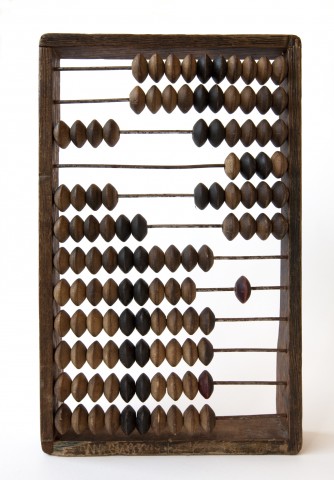














































 Table of Contents
Table of Contents





